8 Catalog Trends That Aged Like Expired Milk – And 8 That Redefined Retail For The Better

In the whimsical world of retail, catalogs were once the holy grail of shopping—thick as a phone book and just as revered. But oh, what a journey they’ve taken.
Some trends aged like that mystery casserole from the back of the fridge—matchy-matchy pajamas for the whole family, anyone? Others, like the iconic wish books, became legendary, turning ordinary mail days into full-blown holidays.
I still remember circling every toy with reckless hope and a highlighter like I was crafting my childhood destiny. This rollercoaster of fashion missteps and retail revolutions is sprinkled with both “what were they thinking?” moments and strokes of marketing genius.
From questionable velvet tracksuits to genius fold-out pages that turned into interactive games, catalogs were a time capsule of taste, trends, and unapologetic ambition.
So buckle up for a laugh-filled ride through the glossy, glittery, sometimes cringey catalog history that still echoes through modern shopping—just with fewer shoulder pads.
1. Matchy-Matchy Family Pajamas (Year-Round)
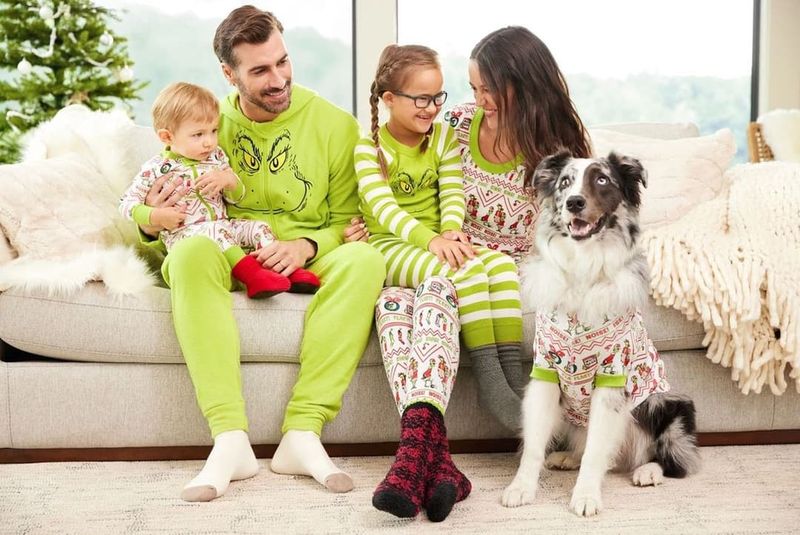
Picture this: my family, decked out in matching floral pajamas, posing for a photo that would haunt us forever. Mom in a flowery nightgown, dad looking utterly defeated in his matching set. Cute for one snapshot; awkward for eternity.
Those catalogs made it look charming, but the reality was a cringe-fest. These pajamas were like a bad sitcom outfit no one wanted to wear off-set.
The real kicker? They were advertised for year-round coziness. But trust me, no one wants to match the drapes all year. A fashion faux pas that aged like milk left out on a summer day.
2. The Infamous “Glamour Sweatsuit”

Ah, the glamour sweatsuit—a paradox wrapped in sequins, velour, and elastic waistbands. Designed to blur the lines between casual couch potato and evening elegance, but truly, it was neither.
I remember trying one of these on, only to realize the sequins itched and the velour swallowed me whole. Marketed as “evening casual,” these were not ready for the club, and barely for the couch.
The catalogs promised allure, yet delivered comedic gold. They sparkled under stage lights but fizzled in daylight. A trend we’re grateful stayed in the past, as it never quite hit the glamour mark.
3. Furniture Made Entirely of Wicker

Wicker furniture—the noisy, splintery staple of tropical-themed decor, taking over spaces like a vine.
Our family room once resembled a dentist’s waiting area in the Bahamas, squeaking with every move. Those catalogs showed serene, beachy homes, but they didn’t mention the scratches or the constant creaking symphony.
Let’s face it, wicker wasn’t built for regular use or comfort. A nostalgic nod to bygone times, now replaced by more user-friendly options. A design that, at best, was a vacation home novelty, not everyday living.
4. Plastic Slipcovers—Featured Like They Were Luxe
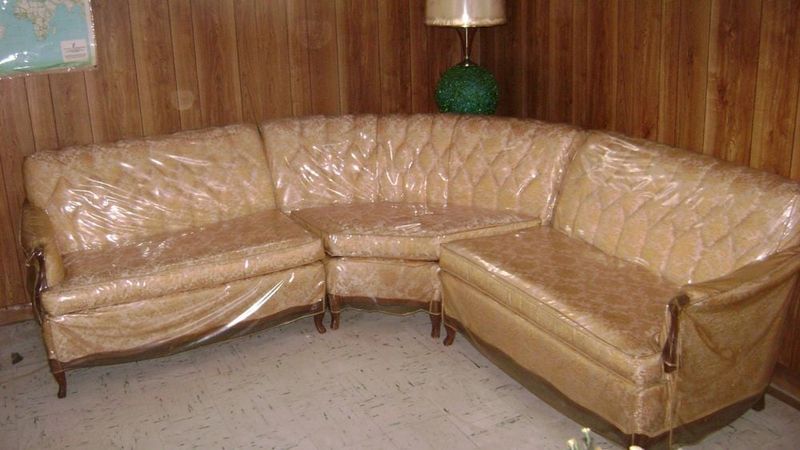
Nothing says “welcome home” like a couch that sounds like fireworks when you sit. Enter plastic slipcovers, a trend that crackled its way through catalogs as if luxury was a sweaty ordeal.
We had those, and every family gathering involved a symphony of squeaks and discomfort. They were marketed as the ultimate in sofa protection, but reality screamed otherwise—literally.
Certainly, they kept the couch pristine, but at the cost of sound and comfort. A layer of unnecessary noise that thankfully slipped out of style.
5. The “Executive” Home Office Look
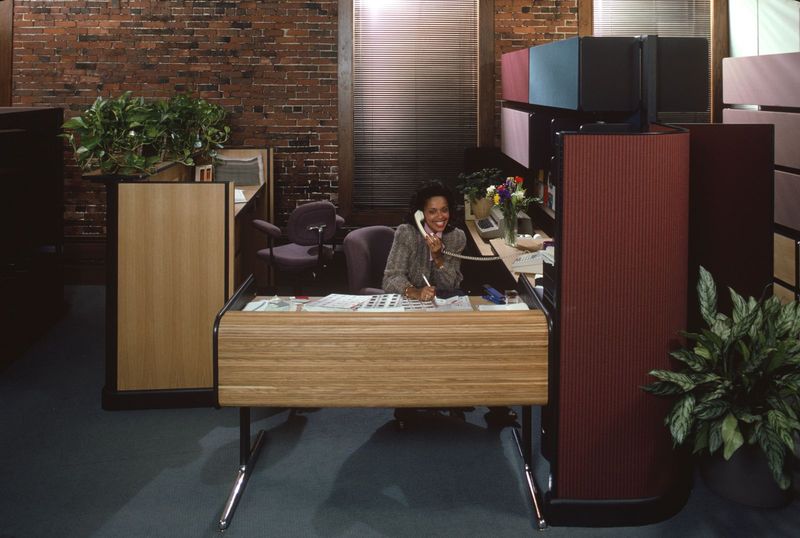
The “executive” home office—a shrine to mahogany desks, leather chairs, and enough dust to carve your name. A power move from 1992 that captured the essence of business, minus practicality.
I remember our office proudly displaying a fax machine and rolodex, a testament to bygone efficiency. These catalogs painted a picture of success, but missed the mark on upkeep.
With more leather than a vintage car, this look promised professional prestige but delivered dust-covered chaos. Modern minimalism owes a nod to the lessons of cluttered elegance from this era.
6. High-Waisted Jeans So High, They Threatened Your Ribcage

High-waisted jeans—marketed as leg-lengthening but felt more like ribcage confinement. A fashion choice that stretched boundaries, literally.
I braved a pair, convinced of their elongating magic. Instead, they cut off circulation and ensured no one dared sit. Catalogs championed them as a wardrobe staple, but comfort was clearly absent.
These jeans deserve an award for perseverance, having returned as modern high-rise styles, but with smart tweaks. A reminder that some trends need a few decades to get it right.
7. Cringey Ethnic “Costume” Sections
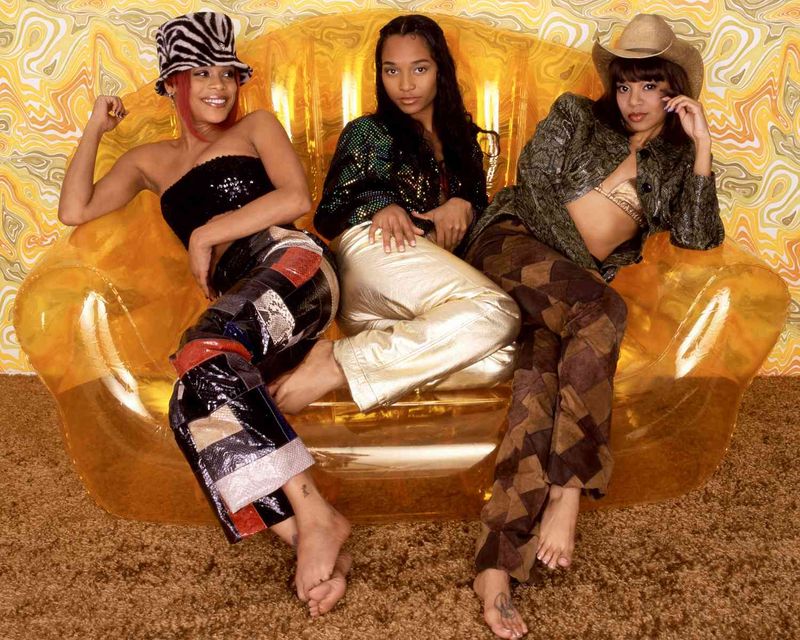
Yikes indeed. Those ethnic “costume” sections in catalogs—a cringe-worthy nod to cultural missteps. From faux-Chinese silk pajamas to so-called “international” Halloween outfits, these pages were a cultural minefield.
They promised exotic allure, but delivered offense. I winced flipping through those pages, realizing how out-of-touch they were.
In a time when awareness was lacking, these sections reflected more ignorance than inspiration. They aged poorly, a big NOPE from today’s more culturally sensitive perspective. Catalogs have thankfully moved on to celebrating diversity without the caricature.
8. The Home Gym That Doubled as a Clothes Rack

We all had that one friend whose home gym was a glorified clothes rack. Catalogs sold dreams of fitness, but reality often turned into a laundry station.
Our multi-use contraption was used once for exercise, then forever for air-drying sweaters. These sections promised abs and biceps, but delivered domestic storage solutions.
Despite their intention, these home gyms became a testament to commitment—or lack thereof. A trend that proved buying motivation doesn’t always equate to action. Today’s streamlined, space-saving equipment has learned from these cluttered relics.
9. Buy Now, Pay Later (Layaway Vibes)

Before Klarna and Afterpay, layaway was the original buy-now-pay-later scheme. It taught us discipline, patience, and the art of anticipation—a slow burn of retail gratification.
I remember circling items, dreaming of ownership. Layaway made it possible, like a financial fairy godmother granting wishes one paycheck at a time.
Unlike credit, it ensured you paid before possession. A trend that aged well, paving the way for modern financial options. A nod to creative commerce, bridging the gap between desire and budget constraints.
10. Wish Book Magic

The holiday catalog wasn’t just shopping—it was manifesting dreams. Kids, myself included, circled items in red marker, imagining the magic of possibility.
These catalogs were the Pinterest of our childhoods, filled with everything we wanted but didn’t yet have. Each page a gateway to imagination.
The excitement of choosing, wishing, and waiting was unparalleled. Wish books redefined retail by intertwining shopping with dreaming, making every child a visionary in their own right.
11. Size-Inclusive Clothing Lines (Before It Was Trendy)

Some catalogs were quietly ahead of their time, offering size-inclusive clothing lines long before it became industry standard. A small step toward diversity in fashion.
I remember my mom finding clothes that fit her curves, a rarity back then. These catalogs didn’t always get it perfect, but they tried.
Today, inclusivity is celebrated, yet the seeds were sown decades ago. A trend that redefined retail by embracing all shapes and sizes, acknowledging beauty in diversity.
12. Room “Sets” That Taught Us How to Decorate
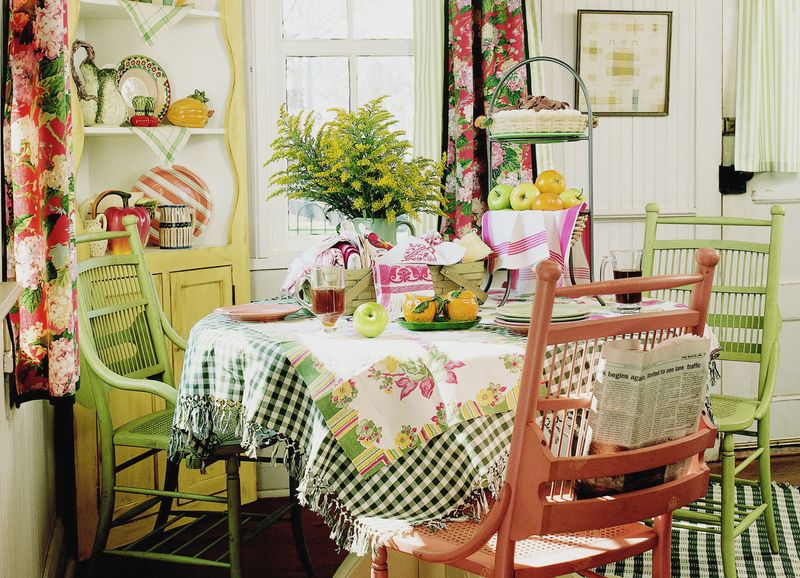
Who knew catalogs were our first interior designers? Room “sets” taught us the art of matching, maybe too much, but gave cohesion to chaotic spaces.
I recall flipping pages, imagining our living room transformed, and suddenly, we had a theme! It was like paint-by-numbers for home decor.
Though they bordered on over-coordination, these sets educated us in aesthetics, paving the way for DIY decorating. A trend that offered confidence in home style, even for the creatively challenged.
13. Gadget Sections That Lowkey Predicted the Future

Those gadget sections—hidden gems predicting the future of technology. Early digital watches and quirky contraptions that seemed absurd but now commonplace.
I marveled at the oddities, unaware they were glimpses into the future. Who knew those catalogs held previews of tech evolution?
Today, we chuckle at their novelty, yet appreciate their foresight. A trend that redefined retail by hinting at possibilities, blending novelty with the promise of innovation.
14. The “Try It, Send It Back” Policy
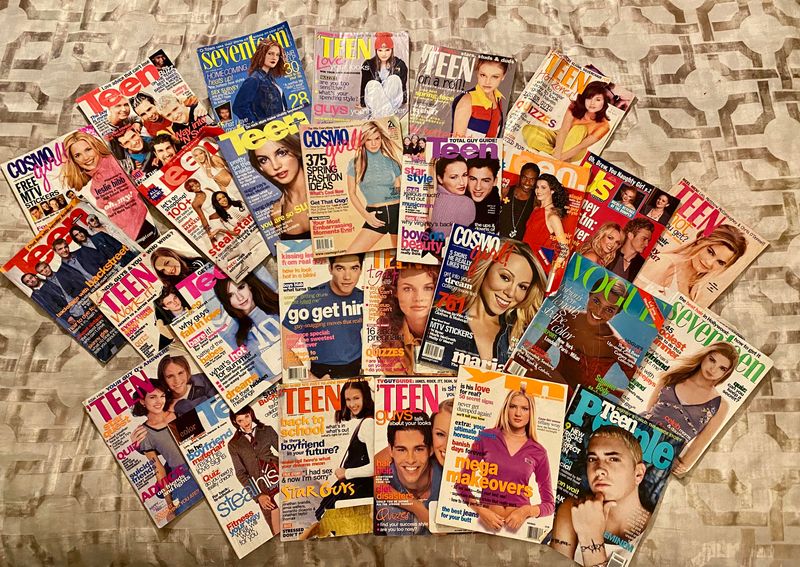
Return policies were shockingly chill. You could try something once, decide it wasn’t for you, and they’d just… take it back.
I once wore a dress to a party, only to return it the next day. Catalogs made shopping risk-free, a trust unheard of today.
This policy redefined retail by prioritizing customer satisfaction over transaction finality. A trend that bred consumer confidence, fostering a love for catalog shopping.
15. Home Delivery for Everything
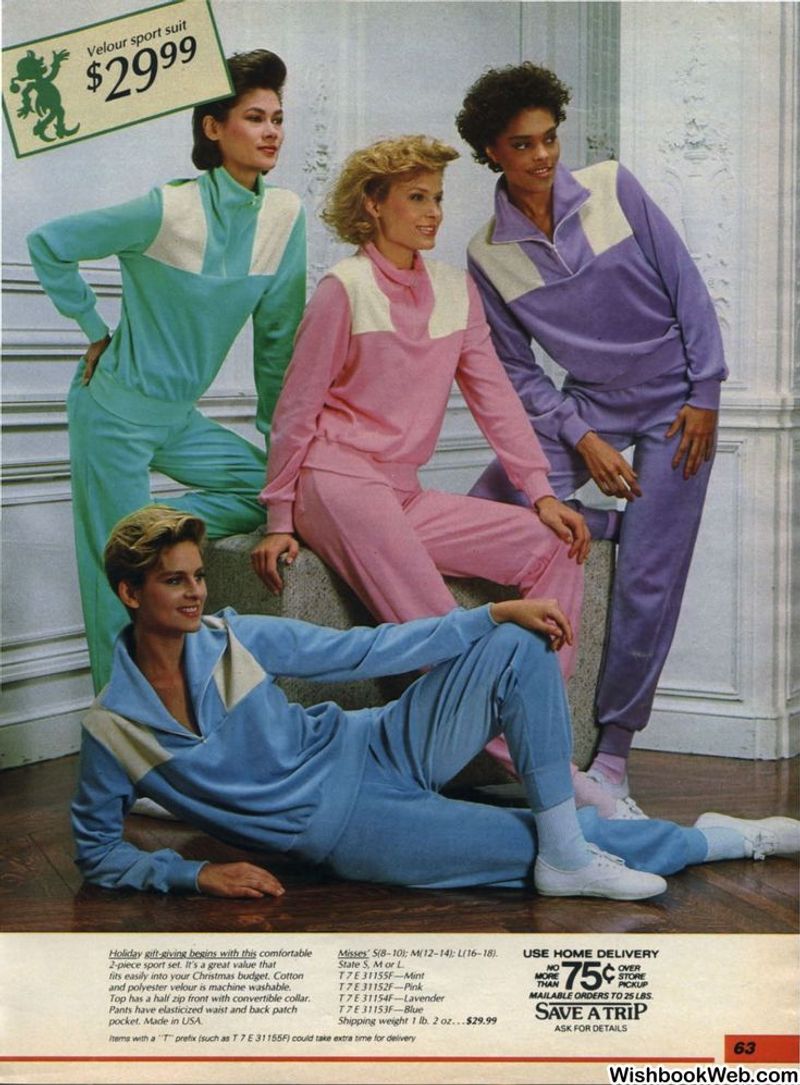
Before Amazon Prime, waiting 4–6 weeks for a delivery was the norm. The patience was excruciating, but the arrival was peak joy.
I remember the anticipation, tracking packages like a hawk, and the thrill when they finally arrived. Catalogs defined retail by bringing stores to living rooms.
Though slow, delivery was revolutionary, laying groundwork for today’s instant gratification shopping. A trend that transformed how and where we shop, turning every delivery into an event.
16. Mini Makeovers on Every Page

Those before-and-after features were mini makeovers—sometimes questionable, often inspiring. They sold dreams along with lipstick, transforming faces with just a swish and a flick.
I tried a few looks, mostly failing, but those pages promised transformation. They redefined beauty retail by showcasing potential rather than perfection.
Despite their quirks, these mini makeovers captured imaginations, becoming a staple in catalog history. A trend that blended aspiration with reality, making beauty accessible one page at a time.
